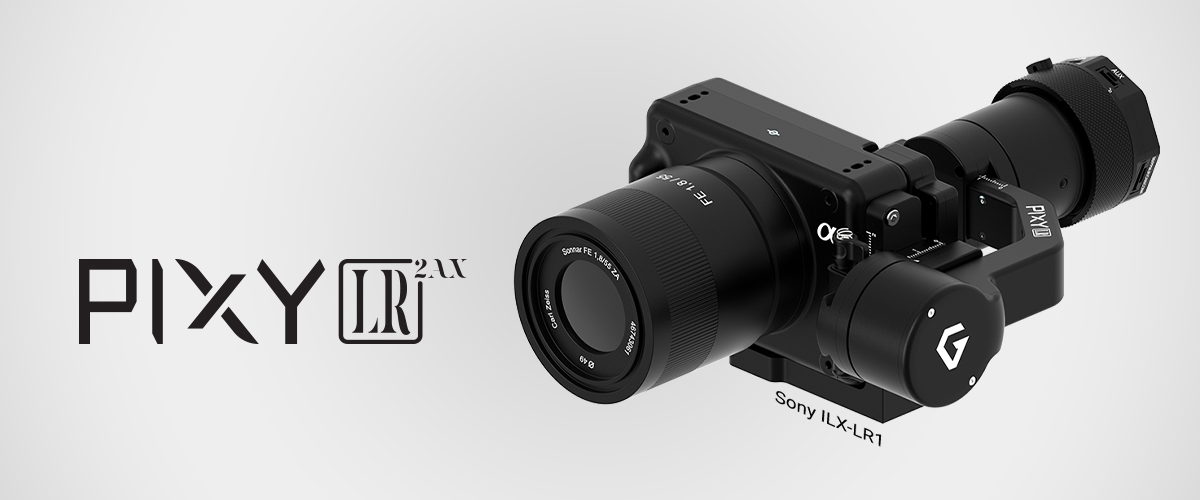Ho Chi Minh City, 17/10/2024 – Gremsy, a leading manufacturer of gimbals for industrial drones, today announced the launch of the two-axis Pixy LR gimbal purpose-built for Sony lLX-LR1. This lightweight, high-performance solution is specifically designed for inspection and mapping applications, offering an unobstructed view and versatile integration capabilities that unlock new possibilities for infrastructure inspections, industrial operations, and more.
Unobstructed View for Superior Inspections
Two-axis Pixy LR's innovative front-mounted, 2-axis gimbal design provides operators with an unparalleled, unobstructed field of view. This is a critical advantage for infrastructure inspection, enabling complete data capture from top to bottom and even challenging angles up to 120 degrees. This expansive range is particularly valuable when inspecting complex structures like bridges, cell towers, wind turbines, power lines, and industrial pipelines, where capturing data from below is essential. Conventional gimbal systems, often limited by airframe components or payload placement, struggle to achieve this level of coverage, frequently requiring multiple passes or complex maneuvers. Two-axis Pixy LR eliminates these limitations, streamlining workflows and reducing operational time and complexity. This unobstructed perspective is ideal for:
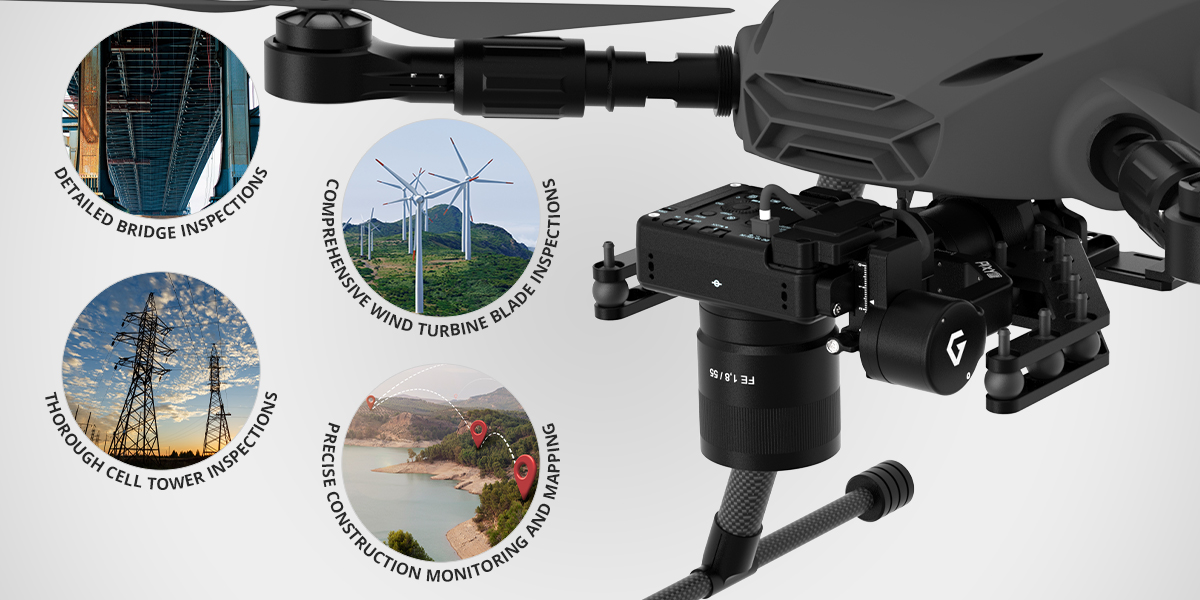
Detailed Bridge Inspections: Assess critical structural elements from below, including pier caps, support beams, and deck undersides, without the need for risky or time-consuming rope access techniques.
Comprehensive Wind Turbine Blade Inspections: Capture high-resolution imagery and data of the entire blade surface, including the leading and trailing edges, from a safe and efficient vantage point.
Thorough Cell Tower Inspections: Inspect antennas, cabling, and other critical components from base to top, ensuring complete coverage and minimizing downtime.
Precise Construction Monitoring and Mapping: Document construction progress, create accurate 3D models, and identify potential issues early on with a clear and comprehensive view of the entire site.
By maximizing data capture efficiency and enabling access to previously difficult-to-inspect areas, the 2-axis Pixy LR's unobstructed view translates to significant cost savings, improved safety, and higher-quality inspection data. This makes it an invaluable tool for professionals in construction, industrial inspection, asset management, and related fields.
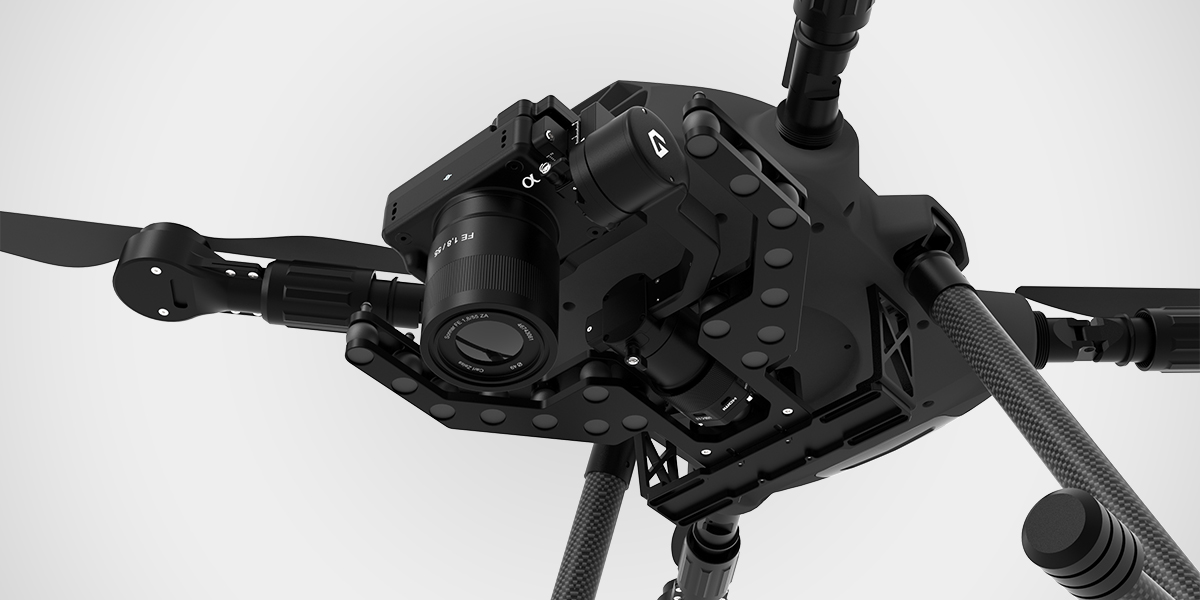
Rover and Robot-Mounted Inspection Capability
Two-axis Pixy LR's versatility extends beyond aerial applications, offering seamless integration with rover and robotic platforms. This adaptability opens doors to a wider range of inspection scenarios, particularly in hazardous or confined spaces where human access is difficult, dangerous, or impossible. By mounting the two-axis Pixy LR on a mobile platform, operators can remotely inspect complex environments, capturing high-quality visual data while maintaining a safe distance. This expanded capability is particularly valuable in:
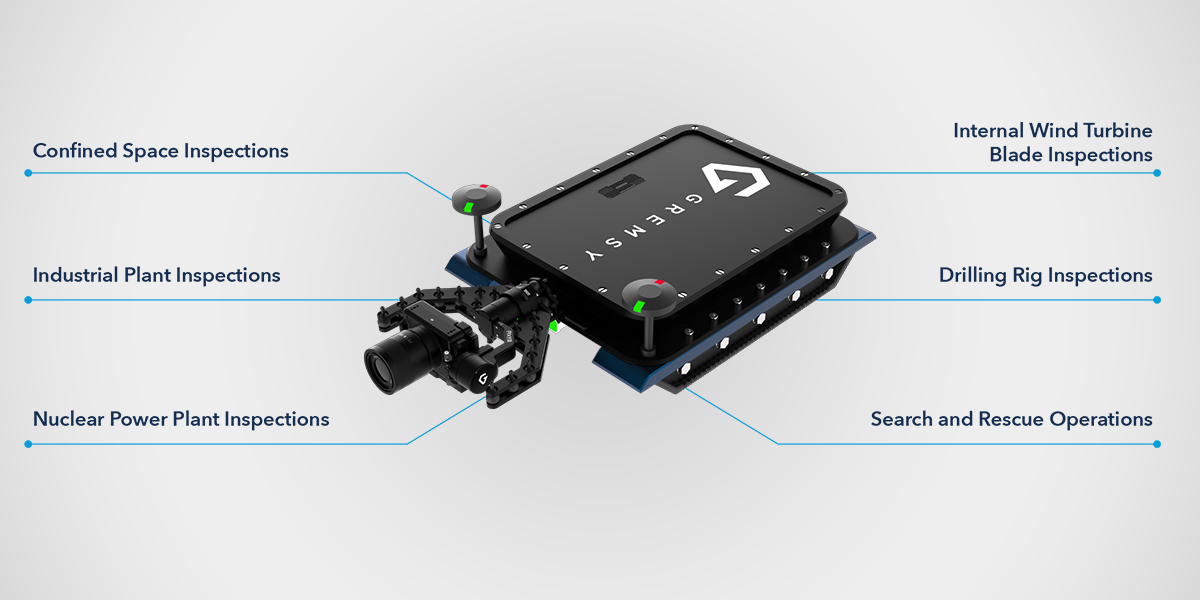
Confined Space Inspections: Deploying the 2-axis Pixy LR on a robotic platform allows for safe and efficient inspection of confined spaces such as pipelines, storage tanks, and ventilation shafts, eliminating the need for personnel to enter potentially hazardous environments. The gimbal's precise control and range of motion enable a thorough visual assessment of these challenging areas.
Industrial Plant Inspections: Mobile robots equipped with Two-axis Pixy LR can navigate complex industrial environments, capturing detailed imagery of machinery, piping systems, and other critical infrastructure. This allows for proactive identification of potential issues, minimizing downtime, and improving overall safety.
Nuclear Power Plant Inspections: In environments with high radiation levels, robotic platforms equipped with the Two-axis Pixy LR can perform crucial inspections without exposing personnel to harmful radiation. The gimbal's robust design and reliable performance ensure consistent data capture in these demanding conditions.
Internal Wind Turbine Blade Inspections: While drones offer outside excellent aerial perspectives, internal robotic inspections using the Two-Axis Pixy LR can provide complimentary close-up dedicated imagery and data, particularly for detailed assessments of blade damage or defects.
Drilling Rig Inspections: Two-axis Pixy LR can be mounted on robotic crawlers or other specialized platforms to inspect drilling rigs and related equipment, capturing critical data on structural integrity and operational status in challenging and potentially hazardous environments.
Search and Rescue Operations: In disaster scenarios or search and rescue operations, robots equipped with the 2-axis Pixy LR can navigate unstable terrain and debris fields, providing valuable visual intelligence to locate survivors or assess damage.
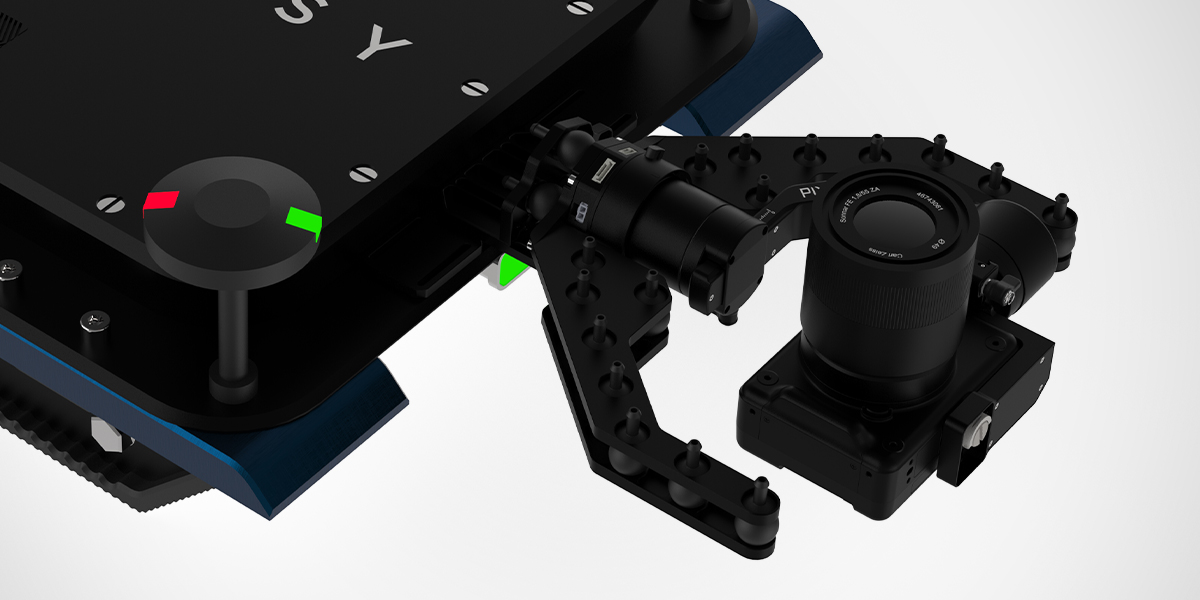
Lightweight and Optimized Design for Extended Flight Times
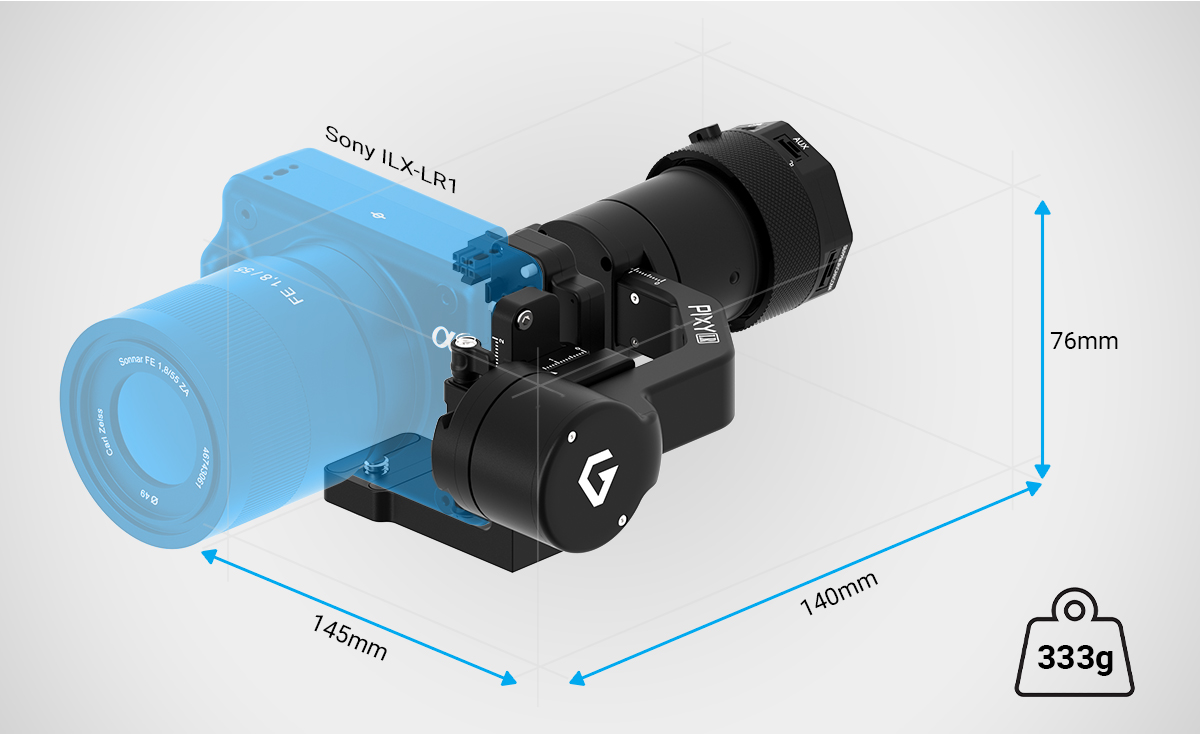
Although both are designed for the Sony ILX-LR1 camera, the two-axis Pixy LR, in contrast to 3-axis gimbals, offers a substantial weight reduction of 162 grams. This allows for extended drone flight times without compromising performance. Its improved SWaP (size, weight, and power) architecture helps to optimize the overall design of drone systems, particularly advantageous for front-mounted configurations.
High-Speed Data Transfer and Advanced Software Integration

The two-axis Pixy LR leverages USB 3.0 connectivity for high-speed data transfer, streamlining the gimbal, and camera operation. This rapid data transfer enables onboard processing for advanced functionalities like image geotagging, AI-powered identification, analysis, categorization, and automated report generation.
Versatile Compatibility and Expandable Functionality
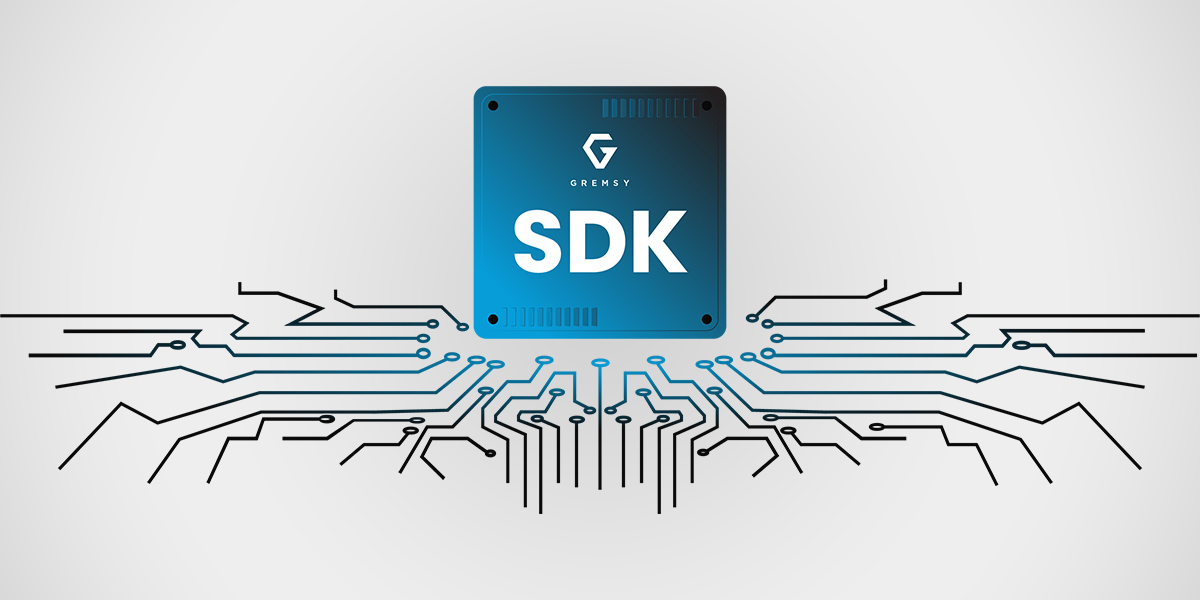
A 4-signal AUX interface allows seamless integration with third-party devices such as LiDAR, laser rangefinders, and thermal cameras, significantly expanding the Two-axis Pixy LR's capabilities across numerous applications. Full MAVLink protocol support and the Gremsy SDK, accessible through UART interfaces, ensure compatibility with a wide range of prevalent drone systems currently available.
